This week, European Parliament and Member States will sit down to start inter-institutional negotiations on the Energy Performance of Buildings Directive (EPBD). Both sides have already prepared their own position, both based on the Commission’s proposed text, and will have to find a compromise to reach a final version that can be adopted by the EU.
While more politically sensitive provisions such as minimum energy performance standards will most likely take the centre stage during these negotiations, we, as representatives of electrical contractors who will have to implement EPBD provisions on the ground, know that there are more detailed provisions that have to be agreed upon and included for the EPBD to succeed.
Electrical installations are a case in point. Previous versions of EPBD never considered them, also because these older versions came from a time when the main aspect to address to increase efficiency was the building envelope.
Now the building efficiency landscape has changed. Electric technologies have evolved and matured to become central in our pursuit of a net zero economy. This new EPBD contains a solar mandate, which will ensure a significant amount of EU roofs are covered by solar panels, a stronger requirement to (pre-)equip parking spaces for EV charging, fully needed to accompany the EU goal to phase out combustion engines by 2035, and bolstered automation obligations, which will ensure electric technologies operate as efficiently as possible. On top of that, heat pumps are upheld as the main replacement for gas boilers through EPBD but also thanks to a dedicated (and still upcoming) Heat Pump Action Plan (more this Plan here).
This new emphasis on electrification in EPBD is a welcome step forward to ensure our buildings are on track for climate neutrality but also to keep consumers’ bills as low as possible and the EU’s energy sovereignty as high as possible.
But there is one crucial element that cannot be overlooked in order to make this happen, and which was missing from the Commission’s proposal: electrical installations.
They are truly the backbone of zero-emission buildings and are what enables the aforementioned devices to function and to be integrated into buildings and energy systems. They have been overlooked until now because our electricity consumption and usage has never been very high as it was mainly used for lights and possibly cooking. Now, as we add devices that draw power in the kWs, such as EV chargers or heat pumps, our outdated, under-dimensioned and under-inspected electrical installations can hardly cope.
Against this backdrop, EuropeOn has joined forces with other stakeholders to alert EPBD negotiators to duly consider electrical installations in EPBD, as is the case in the EU Parliament’s EPBD position.
Read our position paper with specific policy recommendations.
